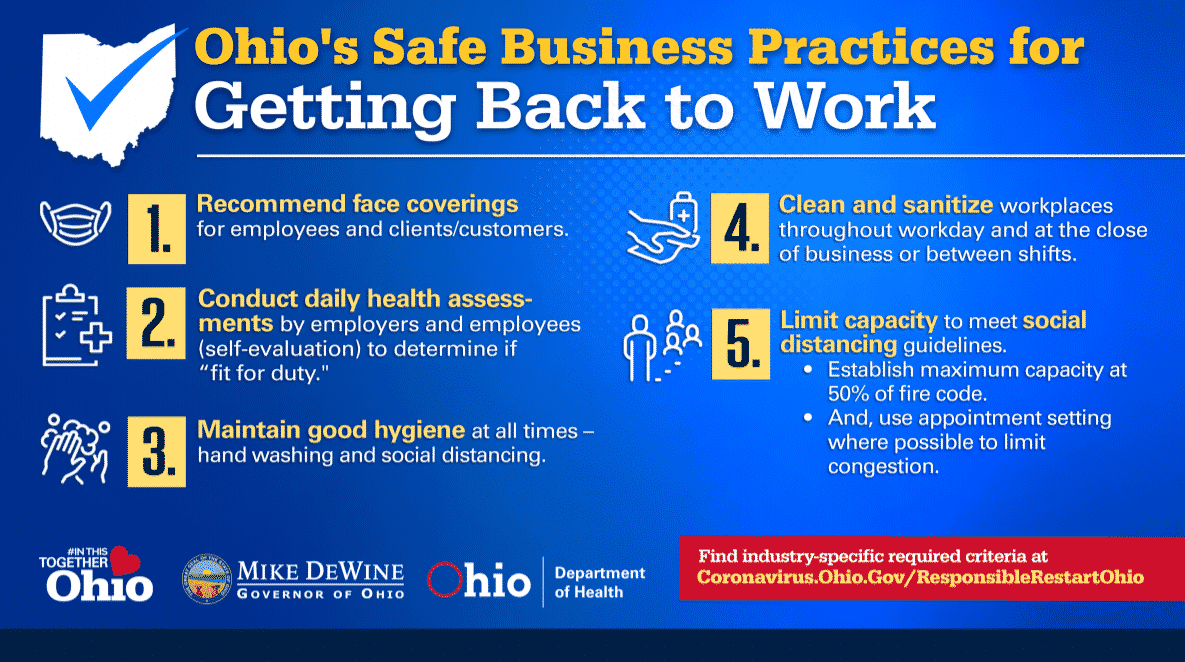We are reopening after COVID-19. Can we bring some employees back, but not others?
Yes. If you are recalling some positions, but not others, you should document the business reasons why only those positions were recalled. If you are recalling some employees in a certain position, but not everyone in that position, you should document the objective, job-related criteria you used to decide which employees to bring back. Seniority or previous job performance, for example, would be acceptable criteria and relatively easy to defend if you are ever challenged.
Deciding which employees to return to the workplace following a furlough or temporary layoff, and in what order you’ll call them back, will require an individualized analysis for each organization. For those who aren’t sure where to start, we provide this as a starting point.
Company Needs
First, think about overall operations in the future. How busy do you expect to be? It’s best to slightly underestimate need; if employees stop their unemployment insurance (UI) claims only to be sent home again after a few days, their continuity of income may suffer. It’s also easier administratively if you only need to furlough and then recall an employee once. And, you can always recall more employees once you’re certain the need exists.
Think about whether there are parts of the products and services you offer that will be more or less important in the future. For instance, a bakery might have very little event catering in the next few months, but may need more delivery drivers. If your company went through the Great Recession, how were you impacted by the economic downturn at that time? Which departments and types of jobs were most essential as business resumed? Which were least essential?
Forecasting future staffing needs will likely require a lengthy discussion amongst the organization’s leaders as well as a willingness to change course as business — and the economy itself — fluctuates.
Individual Employee Selection
Once you’ve settled on a general staffing plan, you’ll need to decide which employees you want to return first. Establish one or more criteria for return. You don’t have to adhere perfectly to the criteria you choose, but the more closely you follow your system the easier it will be to explain decisions to employees (or government agencies or lawyers) who may be unhappy with your approach. If you deviate from your system, be sure to take good notes on why you did so. Some potential criteria for employee selection include:
- Unique or difficult-to-replace skill sets. Business needs will likely dictate when you bring back individuals with special skills, but you may also want to make a point to reach out to these people sooner than later to ensure that they will be available when you need them.
- Overall performance. Preferably, performance-based decisions will be based on written documentation you already have, such as performance reviews, production metrics, disciplinary actions, or a history of attendance/tardiness issues. If performance — whether good or bad — has not been previously documented but will still be the basis of your decision, you should take the time to create that documentation now.
- Using seniority as the primary factor in a layoff decision is a simple, objective reason that can reduce the company’s exposure to liability. However, this is not always in the employer’s best interest when attempting to operate “lean,” since seniority may not correlate with the skills you need most in the workplace.
- Demonstrated ability and willingness to do work outside of their usual assignments. These are uncertain times and having someone who is willing to roll up their sleeves and clean the bathroom or make a delivery if necessary may be invaluable. You can assess this quality based on past actions or by asking employees specifically about their willingness to do tasks that may be significantly outside their job description.
You may choose to call back some employees who have a mix of strengths but are not standouts in any area. This is perfectly acceptable, but be clear with employees and document your reasoning. All criteria used should be job-related or related to business necessity.
Potential Discrimination Pitfalls
Making decisions based on someone’s inclusion in the following federally protected classes is illegal: race, color, national origin, religion, sex, age (over 40), pregnancy, citizenship or immigration status, military status, and disability. Some states have additional protected classes, so be sure to check state law.
Under the current circumstances, there are a few types of discrimination in particular that employers may fall into.
Age Discrimination
The federal Age Discrimination in Employment Act (ADEA) protects employees who are 40 or older. Older employees, on average, will have higher rates of pay. If you decide to eliminate the highest earners from your payroll to save the most money possible, that may disproportionately impact those over 40. If you are considering this approach, we encourage you to call an attorney before finalizing your decisions.
You may also be inclined to “protect” your older workers from the virus by not inviting them back. This should not be part of your analysis. If upon being offered work, an employee of any age tells you that they need an accommodation of remaining furloughed a while longer, then consider that request. Failing to bring an employee back to work because of their age — even if you’re operating with the best intentions — will be a clear case of age discrimination.
While the ADEA takes effect when an employer has 20 or more employees, a similar state law may apply and cover smaller organizations in your state.
Disability Discrimination
Disability discrimination is also likely to be the result of employers trying to protect their employees. But it is not the employer’s job to determine what is best for an employee based on their known or perceived disabilities and doing so will amount to disability discrimination. In the communication you use to offer employees a return to work, all employees should be encouraged to contact you if they want to discuss safety issues or accommodations. Do not make assumptions about what employees will want to do based on their health — that decision is between them and their healthcare provider.
Should an employee request a reasonable accommodation, you should engage in the Americans with Disabilities Act (ADA) interactive process. Requests for an accommodation also must not affect your decision about whether to return an employee to work.
While the ADA takes effect when an employer has 15 or more employees, a similar state law may apply and cover smaller organizations in your state.
Retaliation for Use of Protected Leaves
Employers should ensure that an employee’s use of a protected leave, whether recently or in the distant past, does not factor into their decision-making. Equating use of a protected leave with a reliability problem (for instance), and therefore not calling that employee back as soon as you would have otherwise, will constitute retaliation against that employee for exercising their rights. This applies to state-mandated sick leaves, leaves under the traditional Family and Medical Leave Act, ADA leaves, Emergency Paid Sick Leave and Emergency FMLA under the Families First Coronavirus Response Act (FFCRA), and any number of leaves that are protected by state law, such as voting leave and emergency responder leave.
Documentation
Documentation is just as important now as ever. Even though it may feel like a mass furlough is the perfect opportunity to let go of poor performers, employers shouldn’t assume that their motives won’t be questioned. Documentation should be in writing and easily understood by an outsider to your business. Document why you chose to bring back certain groups of employees before others, as well as why each employee was chosen before others in their job type.
For Those You Don’t Bring Back
If you are bringing employees back in phases, it will save you time to communicate that plan to everyone as the recalls take place. If you bring back half your workforce but don’t communicate with the other half, they’ll hear about it through the grapevine and may start calling, texting, and emailing you frantically for more information. It will be best if you have a clear communication strategy and message from the outset and put people’s mind at ease about the future.
If you have decided not to bring certain employees back at all, you should communicate that decision to each of them as soon as possible so they can start making plans for their next job opportunity. Stringing someone along for weeks or months when you have little to no intention of bringing them back will result in ill-will. In the era of social media and online reviews — especially post-COVID-19, when many businesses will be fighting to rebuild their customer base — employers will benefit from showing compassion, especially toward those who will no longer be employed with them.
Need help navigating COVID-19 for your business? Learn more about our HR Pros through HR On Demand today.
Content provided by Ahola’s HR Support Center.







Reply a Comment